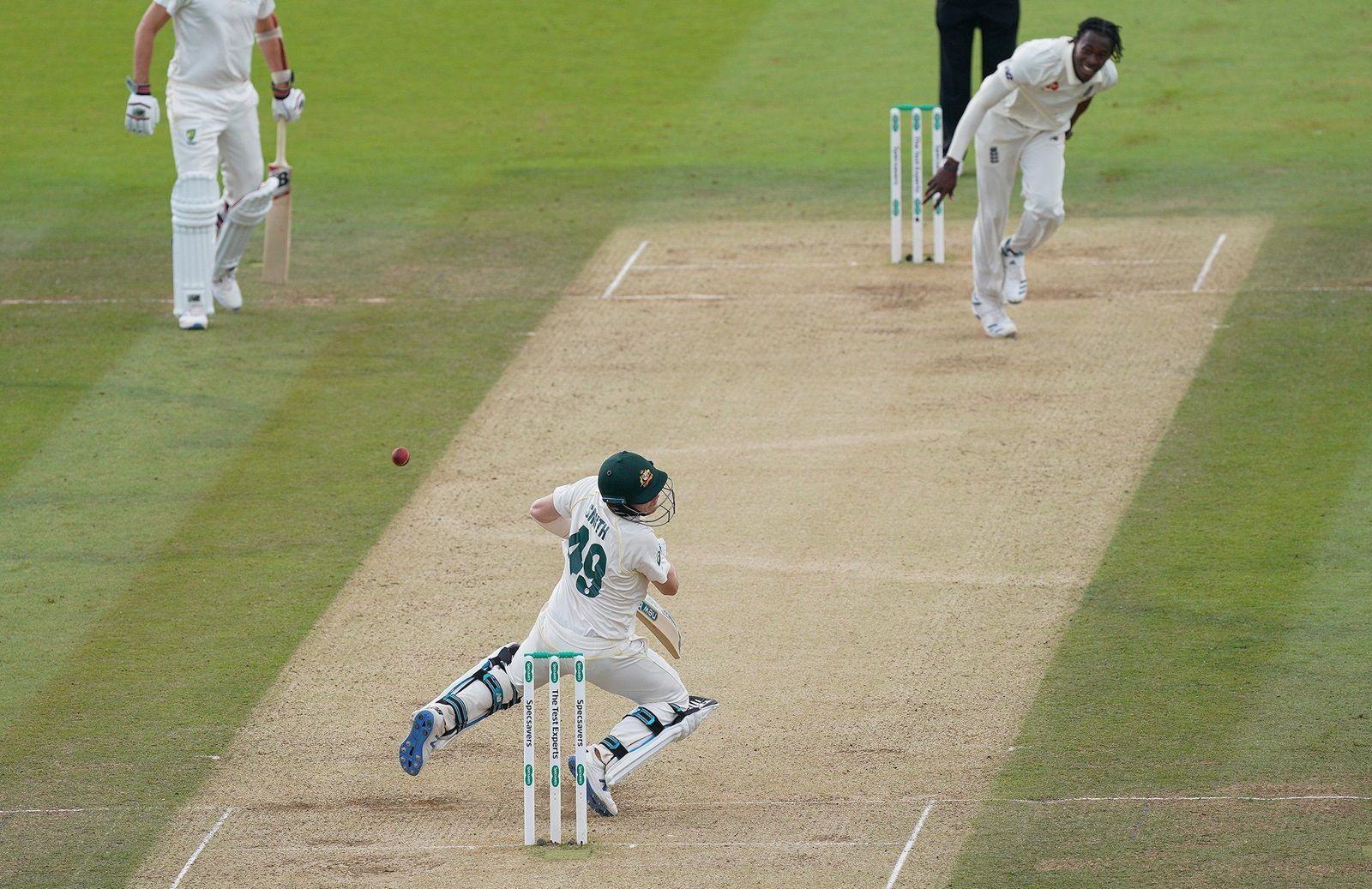
Super-sub in Syed Mushtaq Ali Trophy: How experimentation in a rule could lead the way in the reformations of cricket
The 2022-23 edition of the Syed Mushtaq Ali Trophy, beginning on Monday, October 11, could be on the cusp of something monumental in line with cricket's ongoing evolution.
The Board for Control of Cricket in India (BCCI) gave the green light last month for the introduction of the Impact Player substitution. The concept involves teams replacing a member of their playing XI during the course of the match, as they see fit.
Fast-paced team sports like football and basketball heavily rely on the notion of substitute players, especially due to the impact they bring. The introduction of fresh players off the bench also makes it an enriching viewing experience for the fans.
It also leaves the think tank to mold their plans accordingly both on and off the field, thereby introducing innocuous instability into the game. This rule could potentially reduce the predictability of the matches to an extent as well.
The BCCI aims to bring in an extra tactical layer to the game with the Impact Player substituion rule. The governing body's note read:
"The concept is to allow one substitute player per team to take a more active part in a match. This would add a new tactical/strategic dimension to the game. A number of team sports allow teams to make tactical substitutes i.e. football, rugby, basketball, baseball. The substitute is allowed to perform or participate like any other regular player."
As far as what the new rule could potentially mean for the future of the sport, consider the snowball effect. The BCCI has already expressed their intention to introduce the Impact Player substitution rule in the 2023 edition of the Indian Premier League (IPL) and women’s cricket as well, should it pay off in the Syed Mushtaq Ali Trophy.
The fate of the protocol arguably rests on the feedback provided by coaches and captains upon the culmination of India’s domestic T20 trophy. If it proves to be positive, its implementation in the IPL is plausibly inevitable.
From there, it is only a matter of time before the International Cricket Council (ICC) takes notice, introducing the concept to the highest level. The fans’ potential interest and embracement of the rule will act as the catalyst, compelling the ICC to update the substitution rules from the concussion replacement they have in place as of now.
Why does cricket need the concept of Impact Player?

Cricket, albeit a unique and dynamic sport, tends to get monotonous and predictable after a particular point of time on several occasions. Substitutions in cricket could potentially stir things up and dilute the issue. While the core fundamentals of replacement are situation-based, there are still a couple of detail-oriented cases to explore.
The concept of match-ups is one that has been wholeheartedly embraced and something that has brought tangible results as well. Consider a rudimentary scenario, where a team have a leg-spinner and a left-arm spinner in their ranks. If the opposition side have a left-handed pinch hitter on the bench, and if the situation permits, a substitution could be made.
The opposition skipper could either risk extinguishing the overs of his prime bowlers well before intended or embrace being on the weaker side of the match-up by pitting the spinners against the pinch hitter.
Another tactical angle to look at are the occasions where the teams misread the pitch. Consider the recently concluded first T20I between India and South Africa in Thiruvananthapuram. The hosts benefitted from a three-pronged swing bowling attack to bundle the Proteas out cheaply.
Having seen the pitch well, South Africa must have come to the conclusion that two spinners might not be needed on such a green surface. The visitors had the likes of Dwaine Pretorius and Lungi Ngidi on the bench but had to play with both their spinners who had lackluster outings.
Another acute angle to consider is by considering that the substitution rule could make the players on the sidelines a lot more involved. As of now, players on the bench can only come out to fulfill fielding responsibilities. The substitution rule will ensure that the players remain on their toes.
Cricket’s brief history with the substitution rule

The sport is not entirely alien to the concept of substitutions. The ICC allows replacement players if a player suffers a head-related injury during the course of the match.
Domestic competitions in New Zealand and England began implementing the concussion substitute rule in 2016 and 2018 respectively before the ICC made it official in 2019.
The rule was first used in the 2019 Ashes when Steve Smith was hit by a bouncer from Jofra Archer, leading to Marnus Labuschagne replacing him for the rest of the Test match.
Another memorable instance of the rule being used came during India’s tour of Australia in late 2020. Yuzvendra Chahal was roped in as a substitute for the second innings following an injury to Ravindra Jadeja. The leg-spinner ended up having a major impact on the game and ended up as the player of the match for his spell of 3-25.
Australia’s head coach at the time, Justin Langer, was far from pleased with the player India chose to substitute Jadeja with. The concussion substitute only allows teams to bring in a like-to-like replacement.
Much like several recent attempts at experimentation, it was the Big Bash League (BBL) that injected the concept of substitution into cricket in 2021 like other major team sports.
As mentioned before, the BBL has been a pioneer when it comes to reformations. While some worked out, like the LED bails, others such as the X-Factor and the Bash Boost didn't. The feedback from the Australian players and coaches has not been optimal in favor of the substitution rule. It faces a bigger and sterner test on the Indian domestic circuit, which could pave the way for its wider use in international cricket.
ODI cricket also saw the use of a Super Sub for a brief period between 2005 and 2006. The rule, however, was scrapped just nine months into its inception after it was heavily criticized.
What could Super-sub rule’s success mean for other potential reformations?

"Why fix something that is not broken?" is often a thought that crosses the minds of the purists and the traditionalists of the game. But trying to perfect the sport while maintaining its originality as much as possible should be the ideal way to look at it for cricket to be sustainable.
As sad as it is to admit, cricket is at a tipping point with a lot of questions to be answered at the moment. How to revive ODI cricket? How to restore parity between bat and ball? How to negate the dew factor? How to balance international and franchise cricket in the sporting calendar?
It goes without saying that a rule, as monumental as substitution, should be introduced slowly into the cricketing scene, much like a goldfish in a fish tank. Patience and feedback from all sides is key when it comes to making reformations.
While the attempt at substitution did not leave an enduring impression in Australia, as it was not retained for the upcoming season. It is not necessary that it will meet the same fate in India. The Syed Mushtaq Ali tournament comprises 135 matches, which is more than twice what the BBL conducts in a season. The greater the number of teams, the greater the number of matches, and the feedback will be much more diverse as well.
There are success stories as well when it comes to reforms introduced into international cricket following their success in domestic and franchise cricket. Slow over rates were only penalized off the field through fines and point deductions. However, the new rule, first introduced in The Hundred, saw teams having to bring an extra fielder in after the cut-off time. The rule entered the international arena a couple of months ago.
The potential success of the substitution rule will also encourage India, who are not exactly in the lead of the pack when it comes to reformations, to revisit or catalyze any impending rule changes in the future in order to keep the spark alive. The cricket frenzy nation, with its stronghold grip on the sport, could make a huge difference in pushing new reforms to the ICC’s notice.
Following the success of cricket at the 2022 Commonwealth Games in Birmingham earlier this year, the ICC are considering making an all-out bid for the sport to be featured in the Olympics next. As a result, The cricket’s governing body are unlikely to turn a blind eye to any sort of alteration that could strengthen their case to showcase it at the widest level possible.
The 2022 Syed Mushtaq Ali trophy will begin or start on October 11 with group-stage fixtures. The knockout rounds are slated to begin on October 30, with the final scheduled for November 5.
Will the "Impact Player" or "Super-sub" rule be a regular feature in cricket going forward? Let us know what you think.

